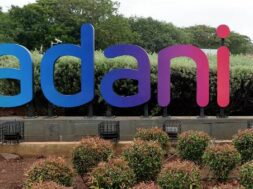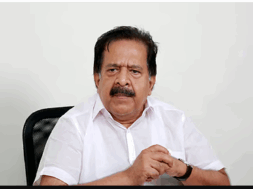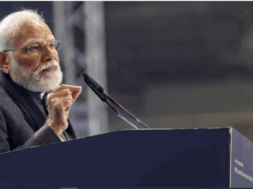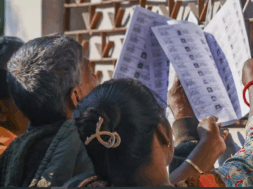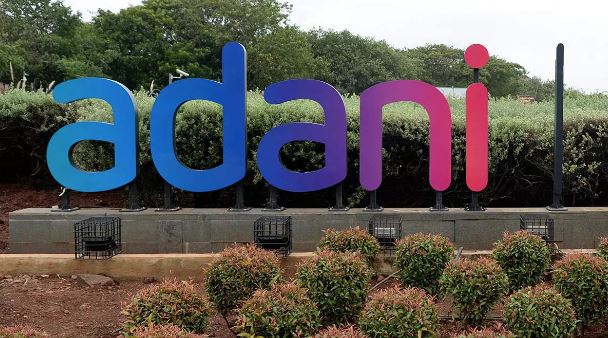
How AGEL is harnessing solar & wind energy to create a sustainable tomorrow
India’s green energy revolution is on track, considering big business houses pushing the nation’s agenda to achieve its net zero emission target by 2070. When it comes to embracing the switch to renewable energy, India is at the forefront and is actively battling climate change. PM Narendra Modi announced at COP26 that India will take its non-fossil energy capacity to 500 GW by 2030.
International Energy Agency (IEA) estimates that green energy sources are expected to generate over 90% of the world’s requirement of electricity over the next five years. By early 2025, the renewable energy sources will have surpassed coal as the primary source of electricity. With the advancement of solar and wind energy, and green hydrogen, this is now feasible.
In India, there has been a significant growth of renewable energy in the power sector. Wind and solar together are responsible for over 8% of total generation. They contribute around 15% of power generation in the states rich in renewable energy sources.In the states where wind speed is strong, it contributes nearly 50%.
Big players like Adani Green Energy Ltd (AGEL), Tata Power, ReNew Power and Acme Solar, besides NTPC have announced their big plans to transition to green energy.
AGEL, the renewables arm of the Adani Group, has the largest operating renewable energy portfolio in India with 8.3 gigawatt (GW) of capacity, with a target of 45 GW by 2030. It plans to add 3 GW of capacity this year. It has lined up a capex of Rs 14,000 crore, while in July the AGEL board cleared a proposal to raise Rs 12,300 crore of equity share capital. According to GQG’s Rajiv Jain, “Adanis are efficient; for example, they get paid in 60 days versus 260 days for a competitor. Given their efficiencies, it is our view that the company will generate higher returns.”
In terms of revenue visibility, there is a 25-year fixed-tariff power purchase agreement (PPA) with an average portfolio tariff of Rs 3.02 per unit. Despite concern over AGEL’s valuation –which is 32 times its book even after correction –analysts believe, “The company’s equity will be continuously recycled, as the cash flow generated each year will serve as an equity contribution for the next project. As a result, the return on equity is expected to keep expanding.”
Green energy, which is derived from natural sources like wind and sunlight, is abundant in nature and does not release greenhouse gases. AGEL is tapping into this source of energyabundantly available in Rajasthan. The state is becoming one of the nation’s most vital solar energy centres. A transmission corridor is taking shape in its western part with 1.25 lakh hectares of government land being available for setting up solar plants. The government’s plan is to generate 10,000 MW more of electricity using solar and wind energy. Its policy will aid in the development of numerous solar power facilities and attract fresh investments. Setting up solar parks makes more sense than individual projects since these facilitate solar project developers to install facilities in a plug-and-play model.
AGEL is one of the largest investors in Rajasthan’s energy sectorAdani Renewable Energy Park Rajasthan Ltd (AREPRL) is the joint venture of Adani Green and RRECL – the state government’s nodal agency for developing non-conventional energy sources – to develop solar parks with a cumulative capacity of 10,000 MW in a phased manner.
To develop wind projects, the company evaluates regions with wind resource potential across the country. It has installed many wind-masts in resource–rich areas like Mundra in Gujarat and Ratlam in Madhya Pradesh. AGEL’s wind power plants have an operational capacity of 1,201 MW.
Wind and solar energy have variable supply, posing a challengeto large-scale adoption of renewables, especially as it contributes a major share in the energy mix. Hybridisation of wind and solar reduces this variability due to complementary nature of their generation profile – solar generation is higher during the day, while wind generation can be higher in the night. Hybrid projects have higher capacity utilization and enjoy the benefit of a reduction in costs associated with sharing transmission lines. AGEL’s solar-wind hybrid projects have an operational capacity of 2,140 MW.
As per a study, the per-capita emissions in India is 1.8 tons of carbon dioxide. Compared to the United States (14.7) and China (7.6), it is less. Still, India stands at the third position globally.
The contribution of AGEL in reducing carbon footprint has been significant. Its renewable projects generated 14.8 million MWh in FY23 leading to a reduction of 13.5 million tonnes of CO2. Cumulative CO2 emission avoided by AGEL is equivalent to the emissions of 8.9 million cars. The company has been ranked first in Asia and among Top 10 RE companies globally by ISS-ESG in its ESG assessment. AGEL’s governance score stands at 4.5 in FTSE’s latest ESG assessment, well above the global utilities and alternative energy sector averages.
Green energy projects will not only enhance economic value through lower costs for consumers but will catalyse rural employment. In line with the national vision, AGEL is already the largest solar developer in the world and on its way to becoming the largest renewable company in India and among the most formidable renewable energy players in the world. AGEL perceives the future as an opportunity to strengthen its sustainable enterprise and enhance stakeholder value.
